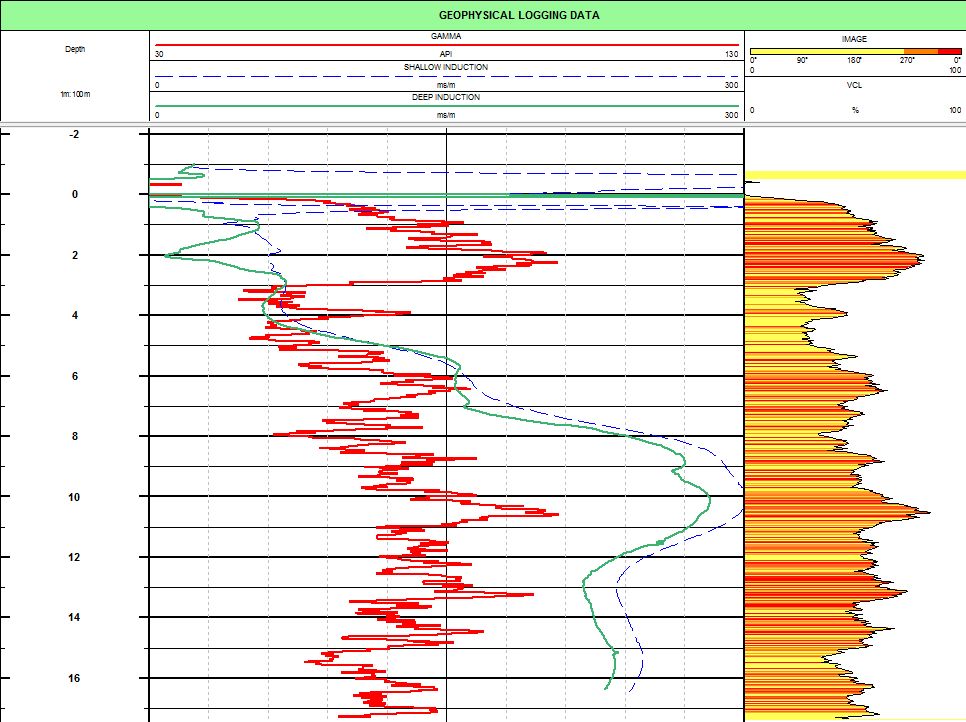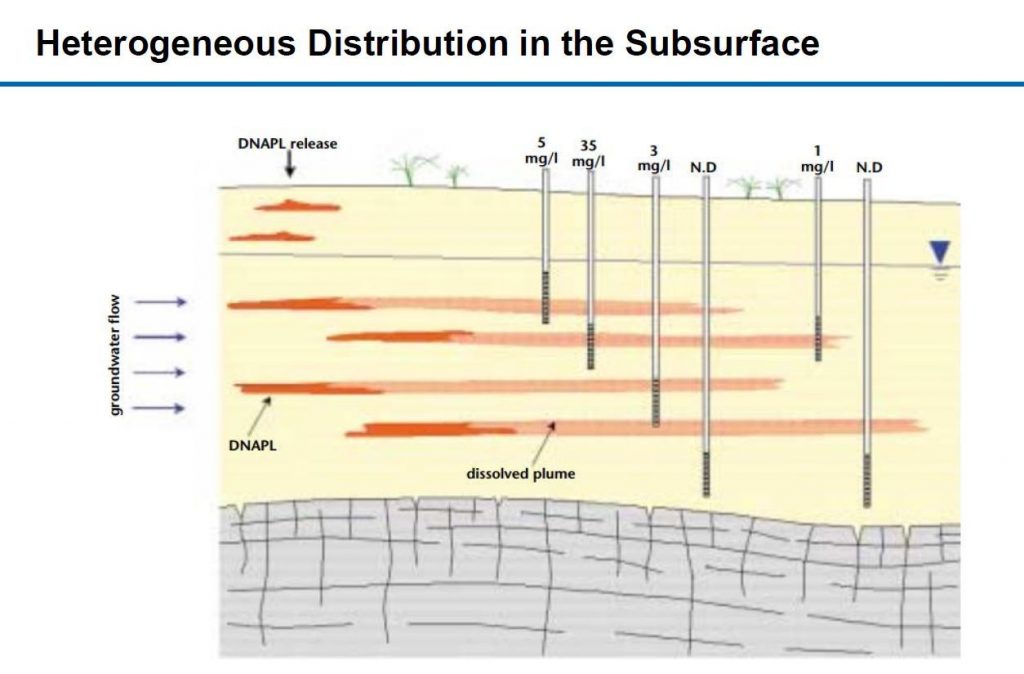Dual Induction-Conductivity Logging – Overview
Application:
Induction-conductivity logging involves the measurement of induced electromagnetic fields in the rock and resulting eddy currents. Changes in the rock’s electrical properties can be due to the clay mineral content, water content and porosity, temperature and water conductivity. Induction-conductivity logging can be performed in an air and/or water filled borehole and with the probe inside PVC. It is a common tool for the shallow environmental contamination market.
Method:
Induction-conductivity logging creates a magnetic field around the probe’s transmitter which in turn creates eddy currents based upon the formation’s electrical conductivity. The conductivity response is based upon factors similar to the resistivity probe such as moisture content, water salinity, clay minerals and porosity.
Calibration:
Calibration rings, each with an assigned conductivity, are used for calibration and verification. An electrically quiet area is essential for calibration to avoid unwanted electrical interference.
Data Processing:
Commonly used for lithological identification and correlation, advanced data processing can involve derivation of the Formation Factor and groundwater salinity. For hydrocarbon exploration, the induction-conductivity data has been used for water saturation and by inference hydrocarbon volumes through Archie’s Law.



